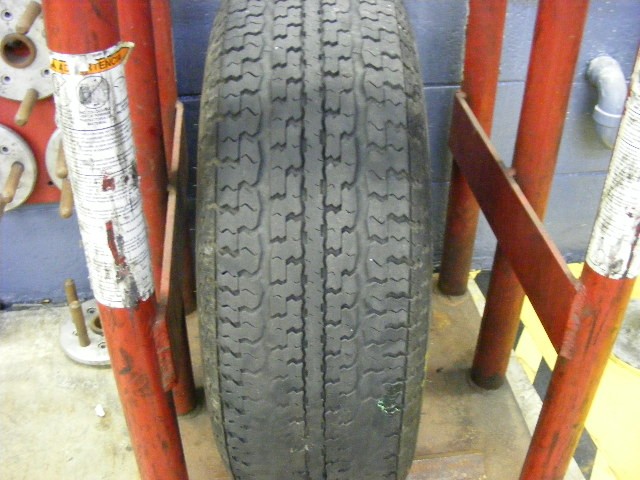Experiencing your steering wheel shaking, especially as you increase your speed, can be unsettling and is often a sign that something isn’t quite right with your vehicle. Steering wheel vibrations that are noticeable at higher speeds, typically between 60-70 mph, and sometimes also around 5-10 mph, but lessen or disappear outside these ranges, are common. The intensity of this vibration usually increases with speed and is closely related to the condition of your tires. A wobble might even be felt at lower speeds. These issues often point to problems with bent wheels, tires that have shifted belts (runout), or suspension and alignment problems.
Tire or Wheel Issues
Problems related to your tires or wheels are frequently the culprits behind steering wheel shaking at high speeds. These can stem from the quality of the tire and wheel themselves or from damage they’ve sustained.
Quality
One quick indicator of a wheel or tire of poor quality is the excessive use of weights during the balancing process. A high-quality tire on a straight wheel should ideally require only about half an ounce of weight for proper balance. Lower quality tires often suffer from weaker tread layers and inconsistent belt seating, and they may simply not be perfectly round from the manufacturing process.
Damage
Damage to your tires, such as broken or slipped belts, can significantly contribute to steering wheel vibrations.
Broken Belt
A broken belt within a tire disrupts its structural integrity, causing the tire to bounce rather than maintain a consistent shape. Imagine a baseball versus a stress ball – a tire with an intact belt is like a baseball, holding its form, while a tire with a broken belt behaves more like a stress ball, deforming under pressure. This bouncing effect leads to uneven wear and vibrations.
As you can see in the image above, a tire with a broken belt can exhibit extreme wear in certain areas, like the bottom of the tread being completely worn down while other parts of the tire still retain significant tread. This uneven wear pattern is a direct result of the tire bouncing due to the broken belt.
Slipped Belt
A slipped belt in a tire will cause a noticeable wobble, which translates directly into steering wheel shake, especially at higher speeds. When the internal belts of a tire slip out of their correct position, it distorts the tire’s shape and balance.
The image above shows a tire with a severely slipped belt. This kind of deformation is not always visible to the naked eye when the tire is on the vehicle, but it can create significant imbalances and vibrations that are felt through the steering wheel.
Wheel Balance Issues
Beyond tire and wheel quality or damage, simple wheel imbalance is a very common cause of steering wheel shake. This can arise from factors like wheels being out of round, bent rims, excessive wear on the wheels themselves, or uneven tire tread wear. Even if tires are initially balanced, driving conditions and wear and tear can gradually throw them out of balance.
Suspension & Alignment Problems
While less direct than tire and wheel issues, problems with your vehicle’s suspension and alignment can also contribute to steering wheel vibrations, especially at higher speeds.
Suspension
Worn suspension components can significantly affect how your tires make contact with the road surface. If components such as ball joints, tie rod ends, or wheel bearings have excessive play or wear, they can make maintaining proper wheel alignment and balance impossible. This instability can lead to vibrations that are felt in the steering wheel. Furthermore, worn suspension parts can cause other issues beyond just balance and wear, impacting overall vehicle handling and stability.
Alignment
Incorrect camber alignment, while not a direct cause of vibration itself, can lead to rapid and uneven tire wear. This uneven wear, in turn, negatively impacts the tire’s balance and smoothness of rotation, eventually causing vibrations. While some mechanics might argue that incorrect toe alignment doesn’t cause steering wheel vibrations, it certainly contributes to rapid and uneven tire wear, which will then lead to vibration issues. Caster alignment, on the other hand, primarily affects the steering wheel’s ability to return to center after a turn and does not directly cause tire wear. However, overall poor alignment is a major contributor to various tire wear problems that ultimately create vibration issues, even if the wheels are initially perfectly balanced.
In conclusion, if you are experiencing steering wheel shake at high speeds, it is crucial to have your vehicle inspected by a qualified mechanic. While tire and wheel issues are the most frequent causes, problems with suspension and alignment should also be considered. Addressing these issues promptly will not only eliminate the annoying vibration but also ensure your vehicle is safe and performing optimally.
